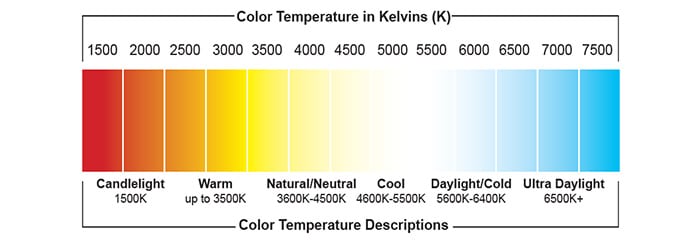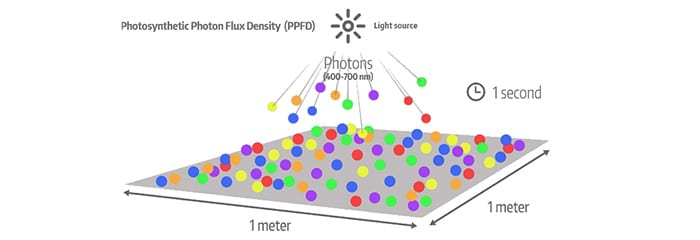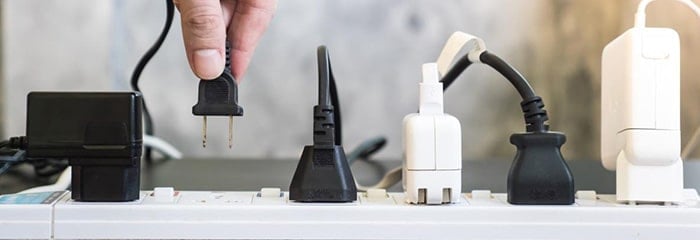LED grow
lights are becoming increasingly popular among growers. In a recent publication, the “State of the Plant Lighting Market” report shows that more growers are adopting LED lights instead of the common alternatives. For example, 47%, 46%, and 45% of growers will choose LED grow lights for propagation, vegetation, and flowering stages, compared to 21%, 17%, and 39%, respectively, in 2016.
While there are several alternatives to LED grow lights out there, LED bulbs and lights are the most common. A good number of indoor growers still use LED lights instead of LED grow lights, primarily because both types of lights are perceived to be the same or almost the same.
Is this true? Read on as we highlight the differences between ordinary LED and LED grow lights in this article.
LED vs. Grow Lights: What Makes A Grow Light Different From LED?
We have highlighted five areas we can compare and contrast LED grow lights and ordinary LED lights below.
1. Light Spectrum
Both standard LED lights and LED grow lights emit lights. Regular LED lights emit light minimally compared to LED grow lights, whose light has a larger spectrum. LED grow lights produce a light spectrum with multiple colors and wavelengths, usually within 400-700nm. These include blue light (400-500 nm), green light (500-600 nm), and red light (600-700 nm). All of these colors have different effects and benefits on the growth of indoor plants.
For example, blue light is responsible for thicker foliage and compactness in plants; green light ensures the leaves on the lower plant parts can access and absorb quality light effectively; and red light facilitates an increase in the length and decrease in the width of plants.
Light from the regular LEDs contains only white and yellow light. While this benefits the plants, they do not provide the maximum benefits that LED grow lights would provide. This is because these lights are initially designed for general or domestic use instead of plant cultivation.

2. Color Temperature
Color temperature is the amount of warmth or coolness of visible light and is measured in Kelvin on a scale from 1,000 (warm/red) to 10,000 (cool/blue). It helps to determine the range of colors a light spectrum can produce and the color the overall light output will trend towards.
Regular LED lights exhibit different color temperatures depending on how and where the light is used. For example, the ordinary light bulb produces light with a color temperature of 2700K to 4000K. This limitation can affect the optimal growth and performance of indoor plants growing under such LED lights.
In contrast, an average LED grow light produces light with a color temperature ranging between 2700K and 6500K, with 6500K being the harsh brightness. Grow lights were designed to replace sun rays as a light source for indoor plants. That is why the color temperature of the light they produce is comparatively harsh, like the sun rays outdoors.
The higher color temperature of LED grow lights is beneficial to growers. For example, most growers prefer to raise their young plants under cool white lamps that provide a 6000K color temperature, especially for the vegetative stage. They only switch to a 2000K color temperature when the plants reach the flowering or fruiting stages.

3. Light Intensity
Another significant difference between grow lights and ordinary LED lights is the intensity of the light they produce. The intensity of light produced is measured in PPFD – Photosynthetic Photon Flux Density. It is a measure of the amount of photosynthetic light reaching your plant canopy and is measured in µMol/m2/S (micromoles per square per meter per second).
Indoor plants require light intensities with PPFDs ranging from 100-1000 µMol/m2/S. Despite appearing bright and striking, the PPFD of light from regular home lights is significantly lower than that of grow lights. LEDTonic’s PPFD Test of standard household bulbs showed that ordinary LED bulbs have PPFDs ranging from 25 µMol/m2/S to 600 µMol/m2/S, depending on the distance.
In contrast, LED grow lights are known for their high intensities, up to 1400 µMol/m2/S in some cases. The extended PPFD range of grow lights makes them a better alternative to regular LED bulbs. Most modern grow lights also allow growers to adjust the intensity of light they produce to suit the PPFD requirements of their plants at any stage of growth.

4. Dimming
When we talk about dimming, we talk about how much control a grower has over his light source. Growers may dim the lights in their grow areas for different reasons. For example, dimming helps to save energy and consequently reduces electricity bills. It also helps to cool down the grow space.
But the most important reason to have dimmable light in the grow space is to provide plants with the ideal intensity required for each growth stage. Plants need different light intensities at various stages of their lifecycle. Meeting these requirements efficiently is only possible when the intensity can be adjusted from the light source.
Most ordinary LED bulbs are not designed to allow dimming. However, almost all modern LED grow lights have a dimming function to enable growers to control light intensity effectively.

5. Power Consumption
The light intensity of a bulb can also be measured in wattage—the higher the intensity of a bulb, the higher the wattage it produces. However, there is a significant difference between the light intensity in plant grow lights and ordinary bulbs, with the former producing a higher light intensity. Therefore, plant grow lights usually have a higher wattage rating than regular LED bulbs.
The grow LED bulbs will sometimes stay on longer—up to 16 hours to produce light of sufficient intensity for indoor plants. This increases the power consumption. LED grow lights, on the other hand, produce higher light intensity and wattage in a shorter period of time while consuming more electricity.
Fortunately, LED grow lights are designed to use less energy – up to 50% less compared to these regular bulbs. Most grow lights store the energy they draw and consume it more efficiently. They also run cooler and produce a more efficient spectrum than regular bulbs. All of this contributes to an overall improvement in power consumption and efficiency. If you want to calculate the electricity costs of growing plants, you can find more information on How Much Will It Cost To Run LED Grow Lights.

Final Words
So far, we have established that grow lights are different from ordinary LED bulbs. But what makes a grow light different from LED?
While the former is designed mainly for illumination purposes, LED grow lights are more suited to plant growth and are designed to be a direct replacement for sun rays for indoor plants. LED grow lights also produce a more robust light spectrum, comprising red, blue, and green colors, compared to the yellow and white colors in the light spectrum from ordinary LED bulbs. The three colors in the grow lights ensure plants grow better and more optimally under grow lights.
Ordinary LED bulbs also tend to increase electricity bills because they are less efficient than grow lights. Most grow lights are powered by efficient bulbs that draw and use lesser electricity, thus reducing the amount of electricity used over time.
Based on these, we can conclude that grow lights are more effective, efficient, and flexible than regular LED bulbs. They are more beneficial to indoor plants, which explains why they are becoming increasingly popular among indoor growers.
Source link
